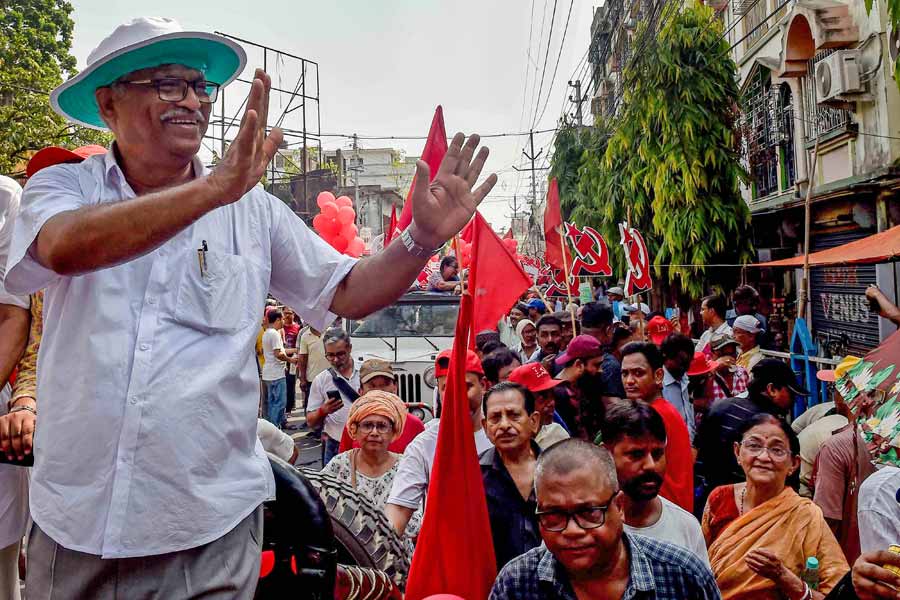Pablo Picasso once said, “There is no abstract art. You must always start with something. Afterwards you can remove all traces of reality.” This is what Sibaprasad Karchaudhuri does in the works exhibited in Dream of an Idiot (on view at Emami Art till September 30). Stylistically, Karchaudhuri’s works are strikingly diverse, incorporating both biomorphic and geometric forms, expansive and intimate scales, and maximalist and reductivist approaches to composition and colour. Bold, colourful and untethered from recognisable references to the physical world they might be, but they will jog the viewers’ memory by evoking familiar landscapes and shapes.
Take the nearly-omnipresent triangle, for instance. Be it in the pillayar moggu motif of kanjeevaram sarees or in tribal warli art, triangles are a popular motif in Indian artistic traditions. But in the hands of Karchaudhuri, the triangle becomes Platonic — the Greek scholar believed that triangles were the most basic elements from which everything in the world is created. They are broken up, fused, contorted, sharpened and blurred to form Karchaudhuri’s feverish world of dreams. The eponymous work, Dream of an Idiot - 2 (picture), is a perfect example of this. A densely hatched shadow looms in the foreground of a chaotic dreamscape of triangular shapes, a dark, portentous cloud-like pattern hanging directly above it. The sense of loneliness in this painting is palpable — could it be a visionary and his dream, out of time and, thus, out of place? The figure, hunched over, and its composition are, evidently, misfits. But, as with most abstract art and most dreams, meaning remains elusive.
Loneliness also underlines the Figure in Column Shape, a solitary silhouette with a patchwork of shades, hovering at the margin between darkness and light. The tonal tenor of this painting perfectly summarises the palette of the exhibition — rarely is there an exuberant colour; instead, teals, muddy beige and grey dominate the gallery space. Bright spots of yellow, ultramarine, pink and light blue are overlaid with bold strokes, leaving only occasional peeks of incandescence for the viewer. Textural variations brought about by layering close and distant hatching, alterations in the thickness of lines, and skilled application of overpaint are used to create depth and a sense of nearness and distance.
The tapestries displayed are wonderful amalgamations of Karchaudhuri’s design idiom. A delightfully absurd preliminary drawing for textile printing populated by strange creatures also caught the eye.

![Dream of an Idiot - 2 by Sibaprasad Karchaudhuri [Emami Art]](https://assets.telegraphindia.com/telegraph/2023/Sep/1693630942_1.jpg)








